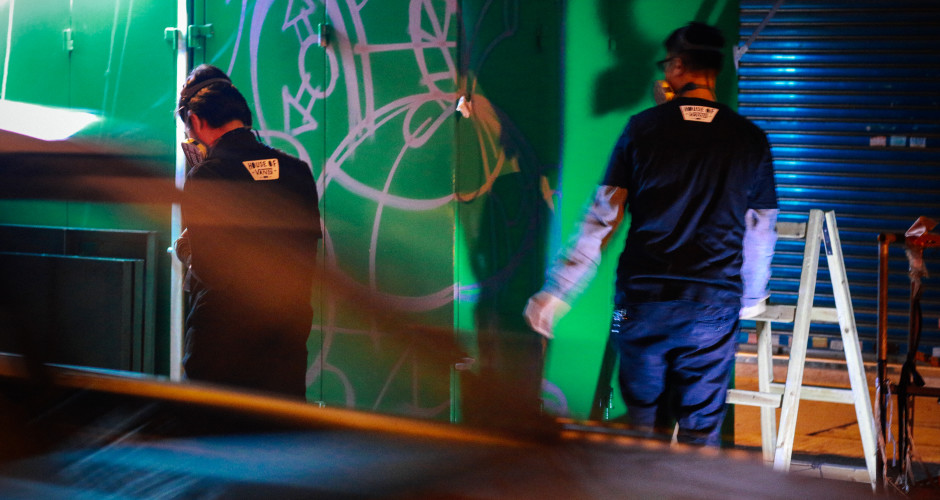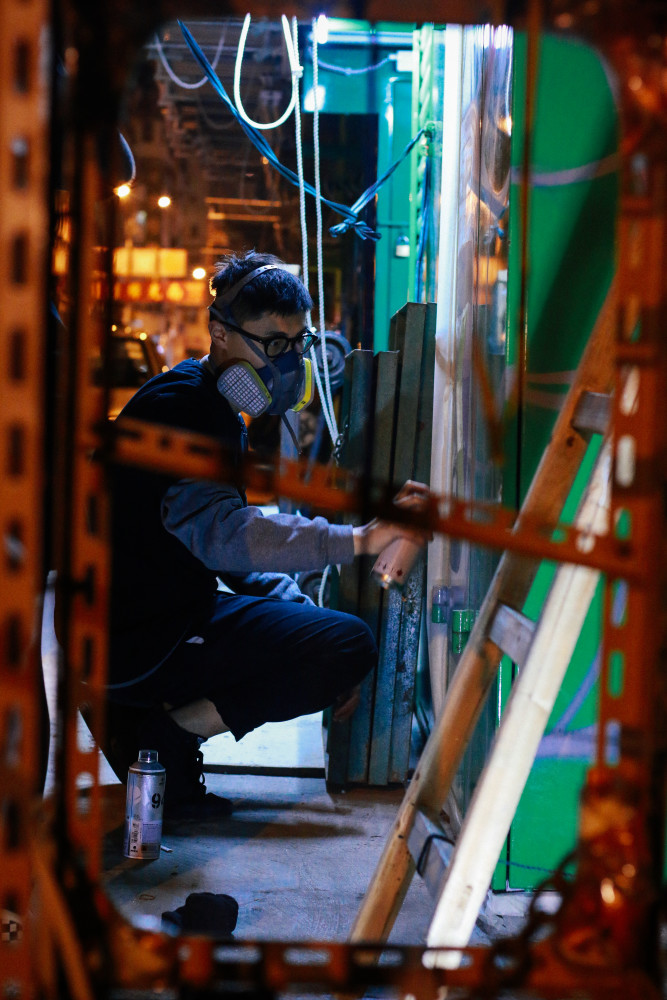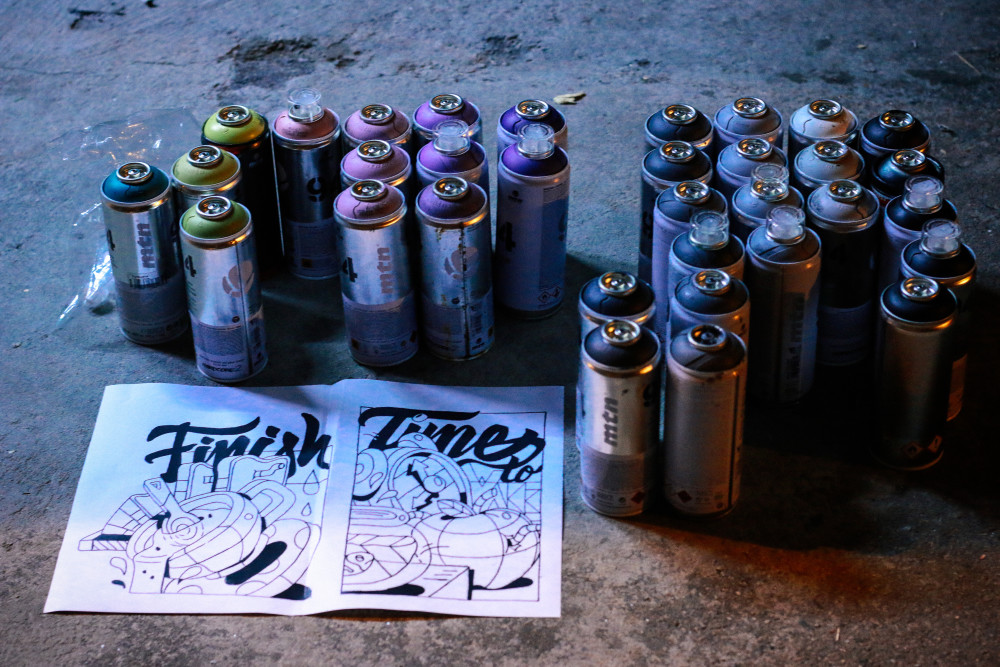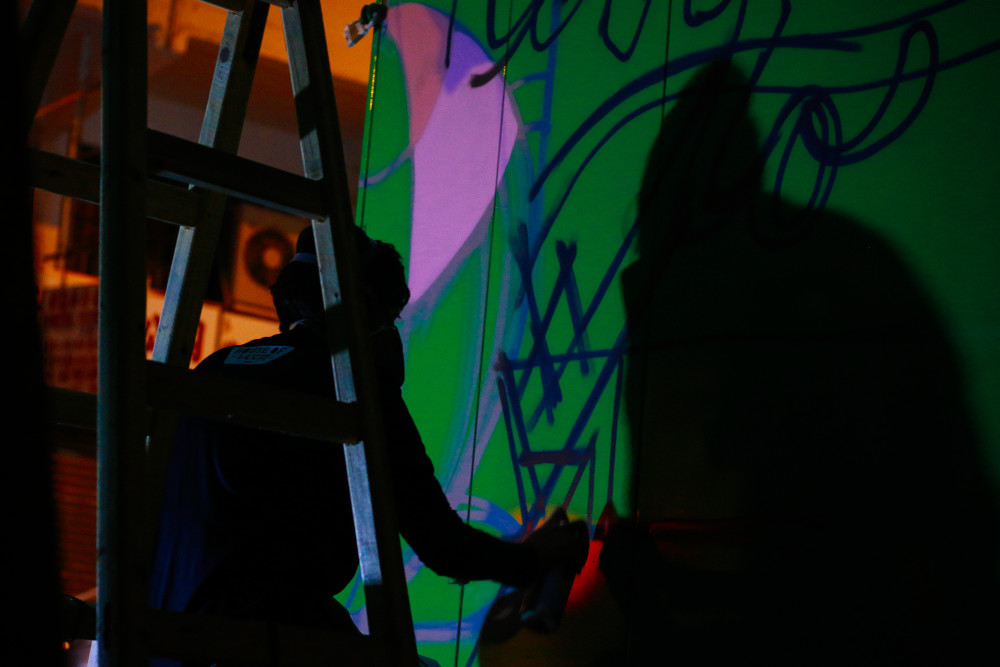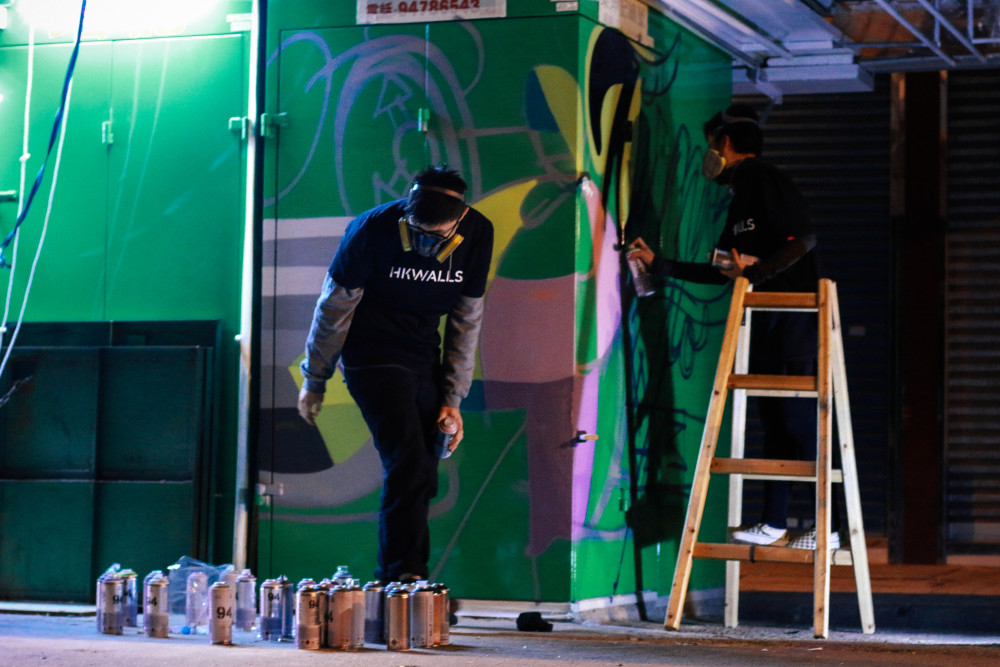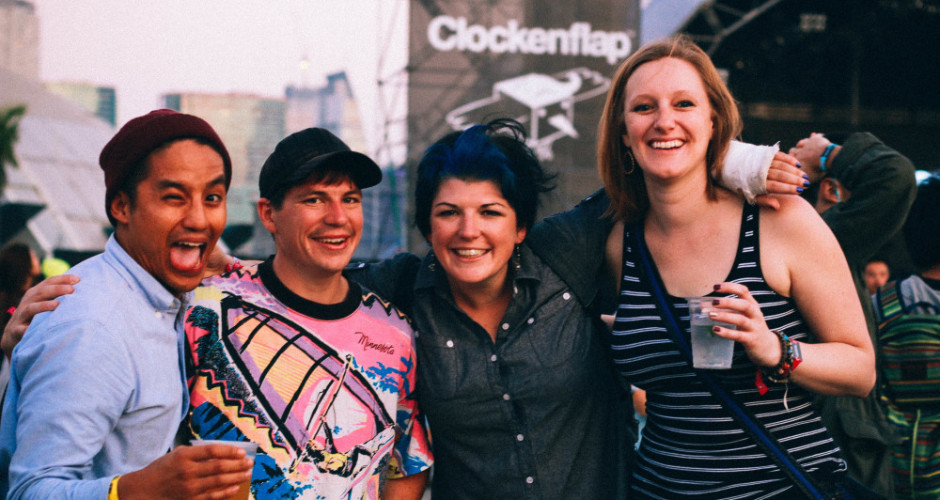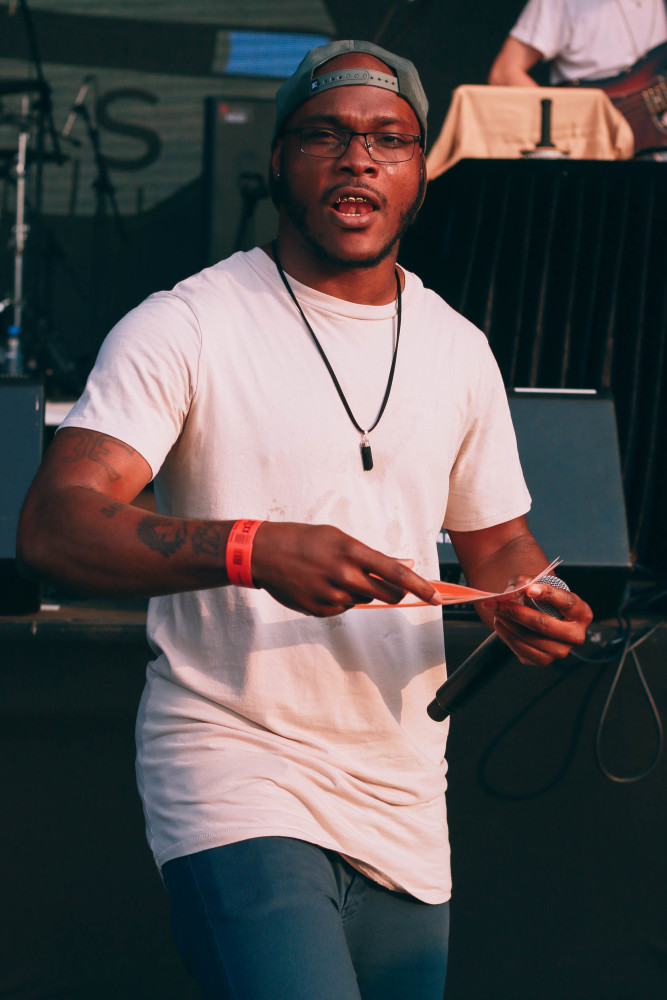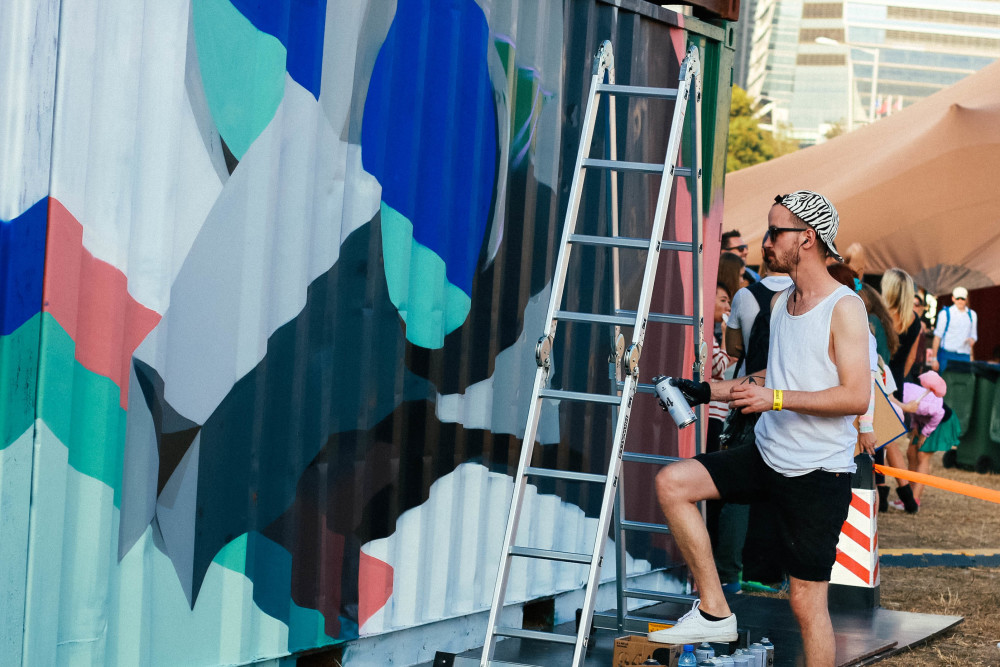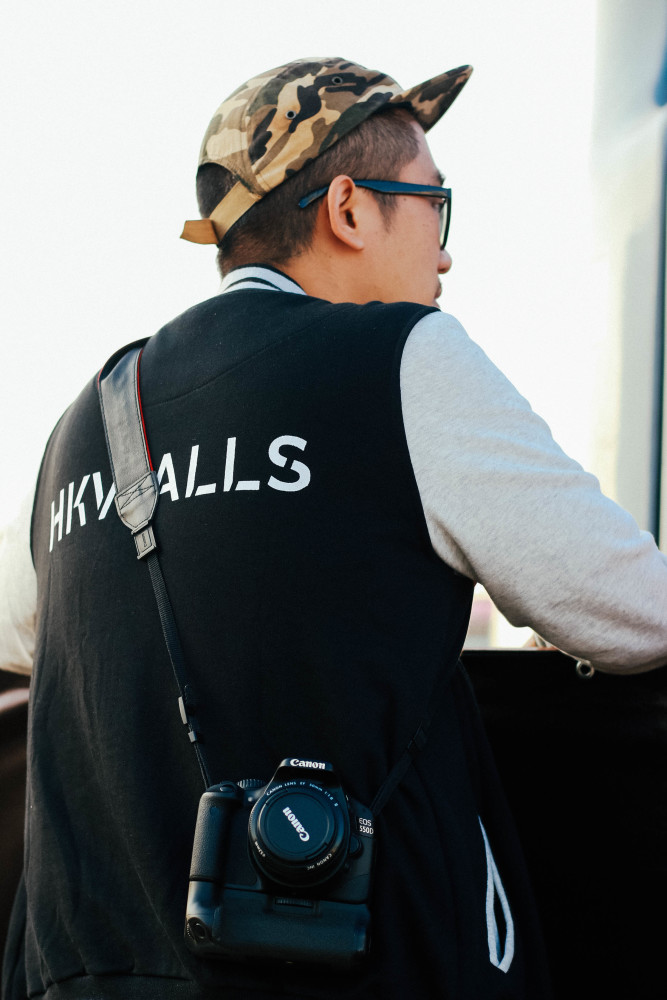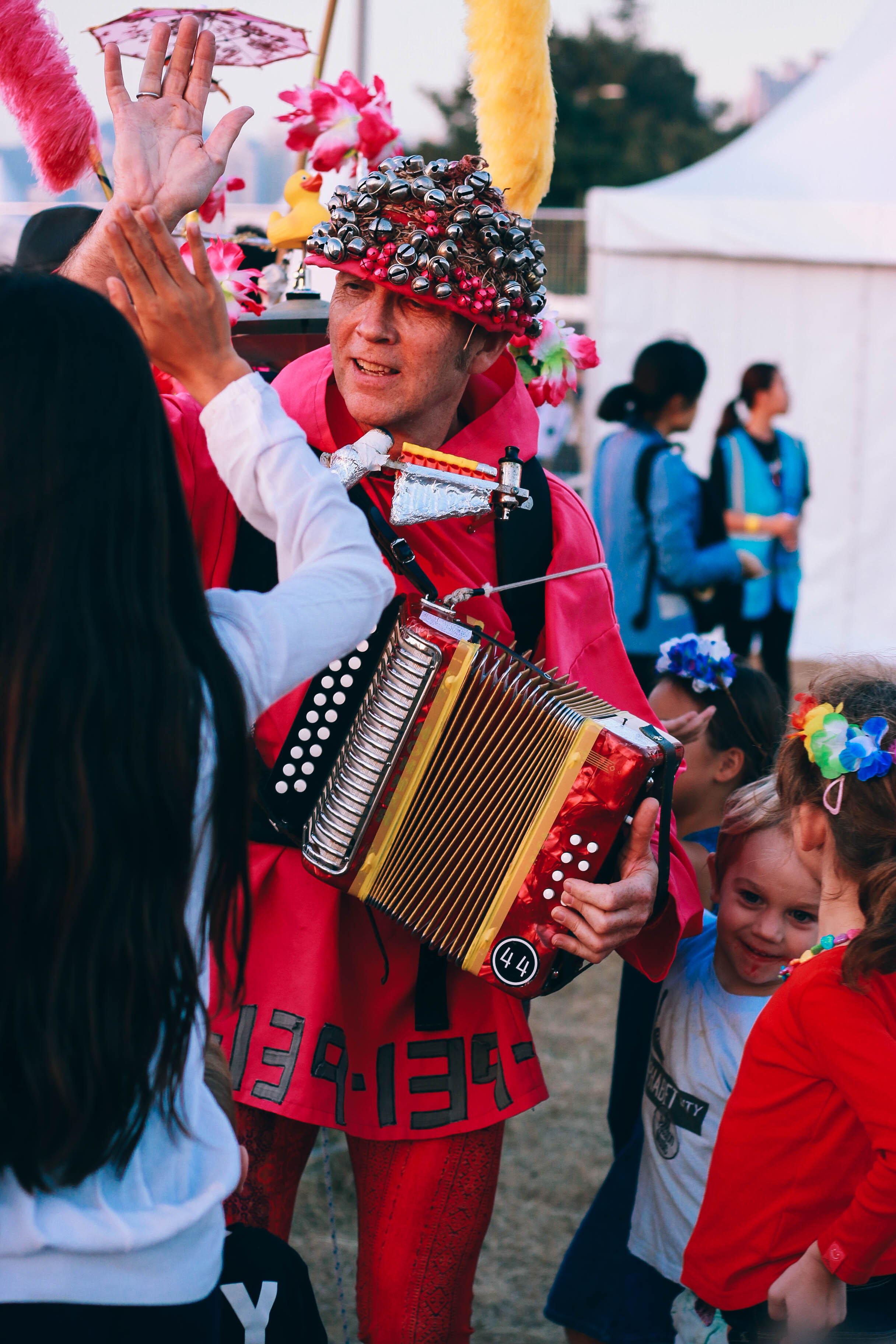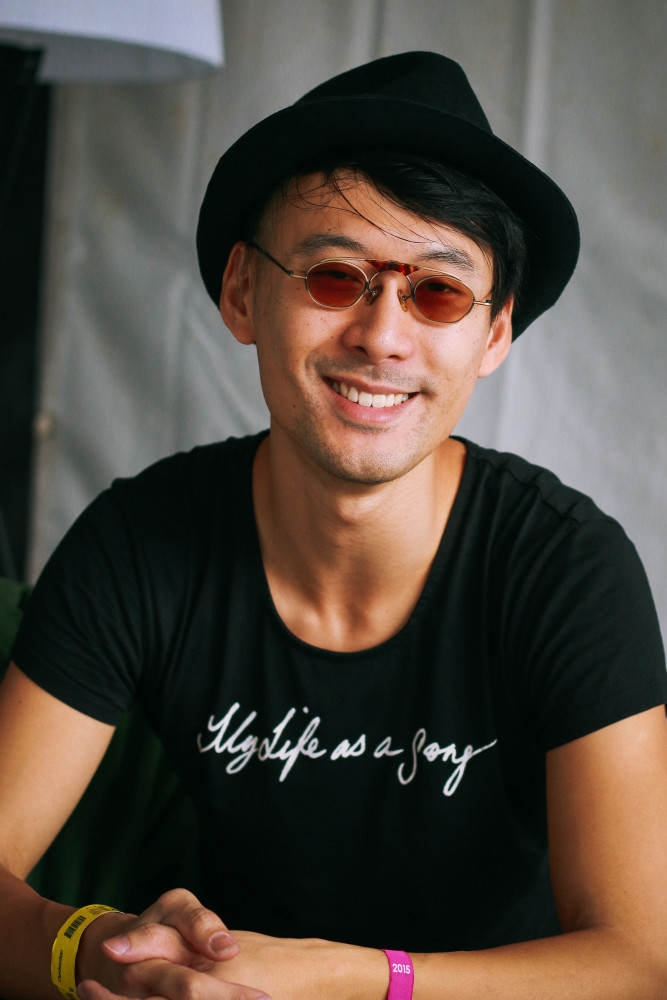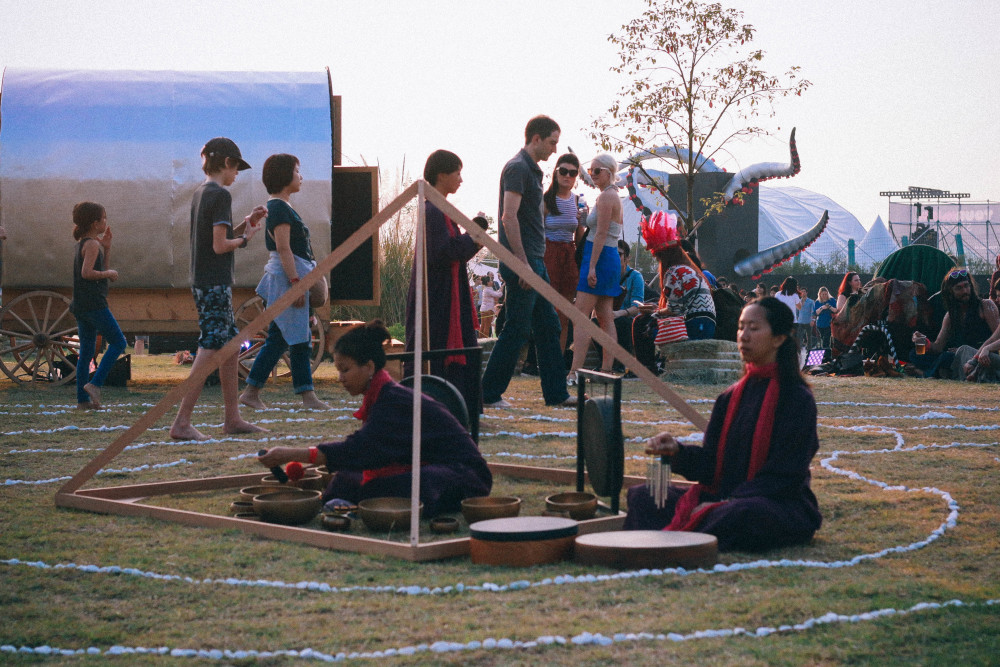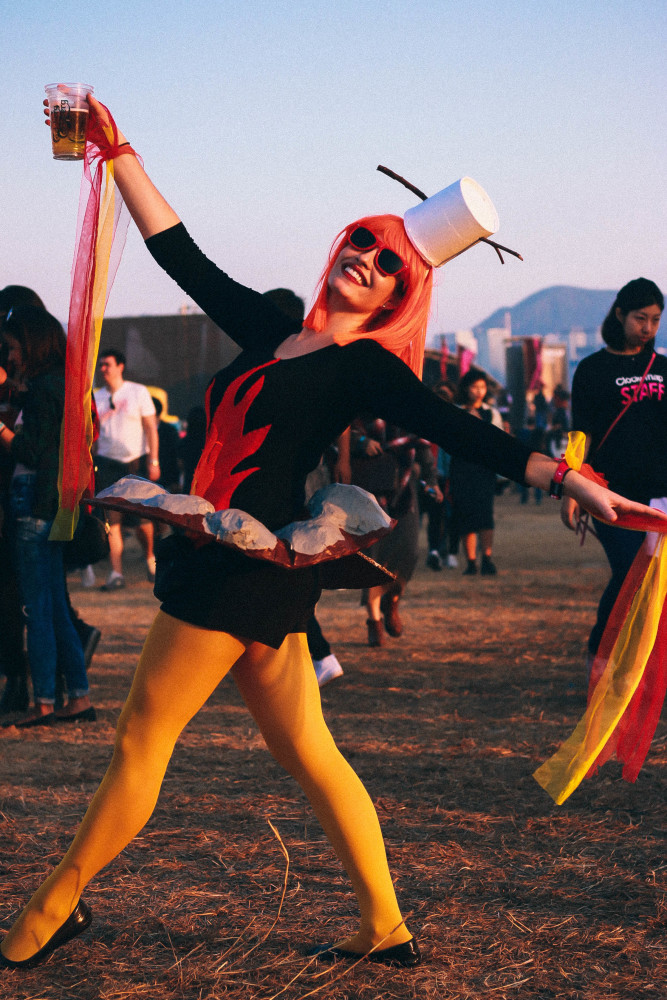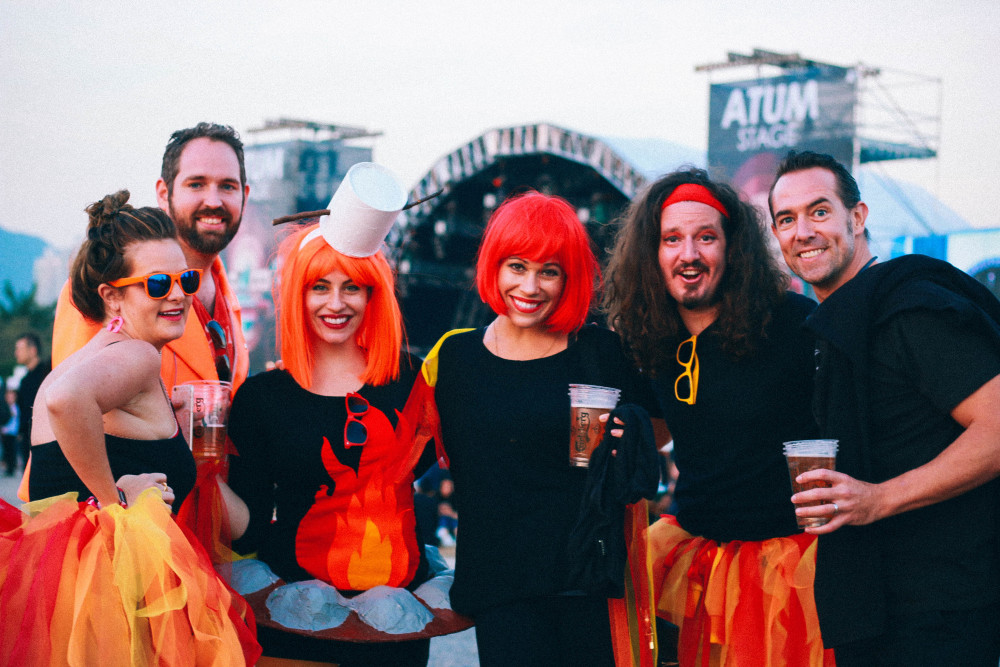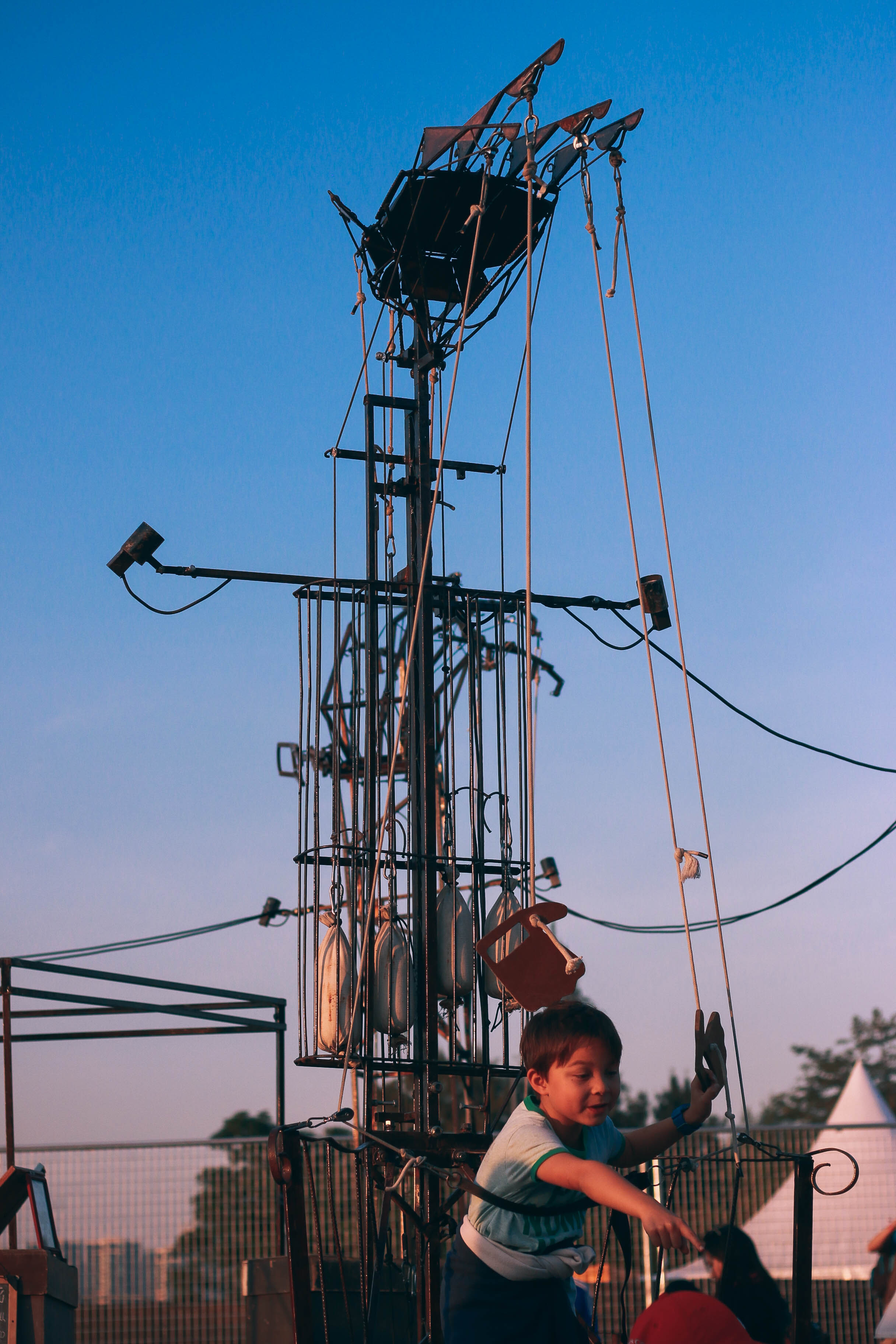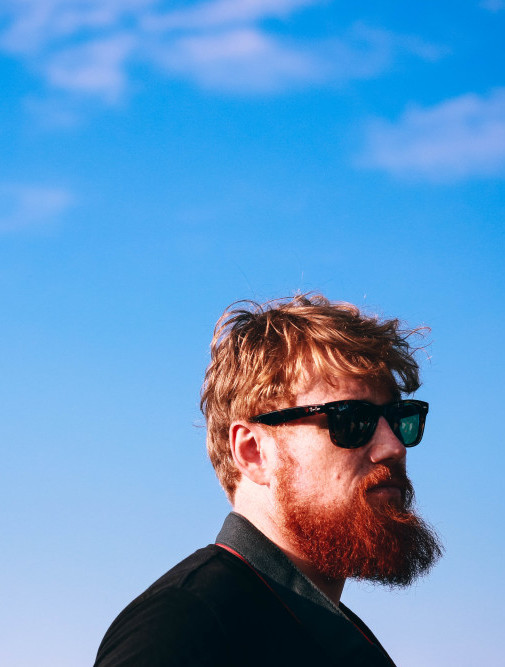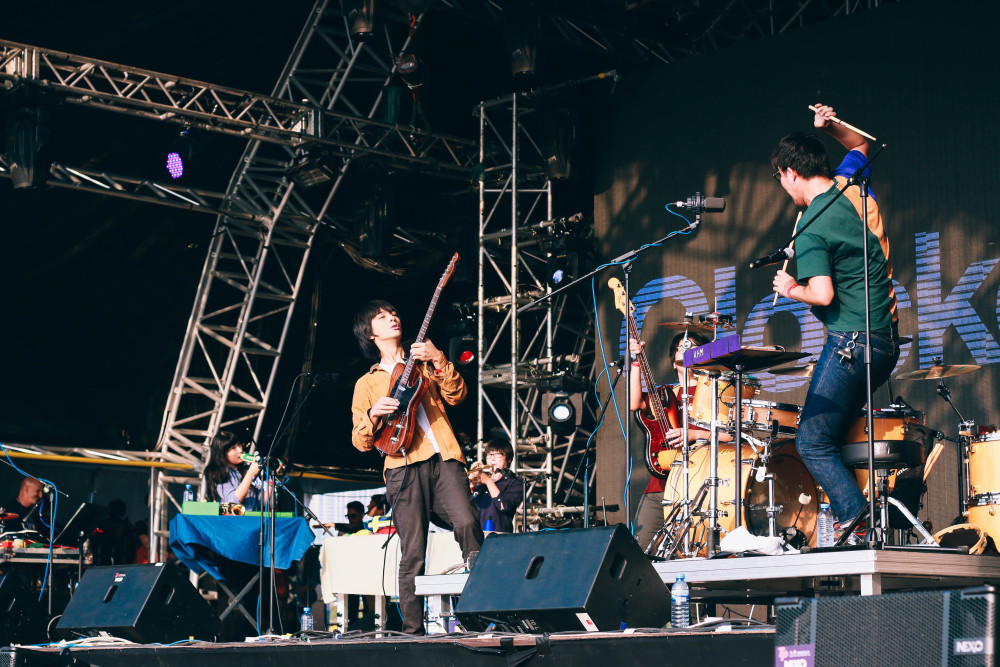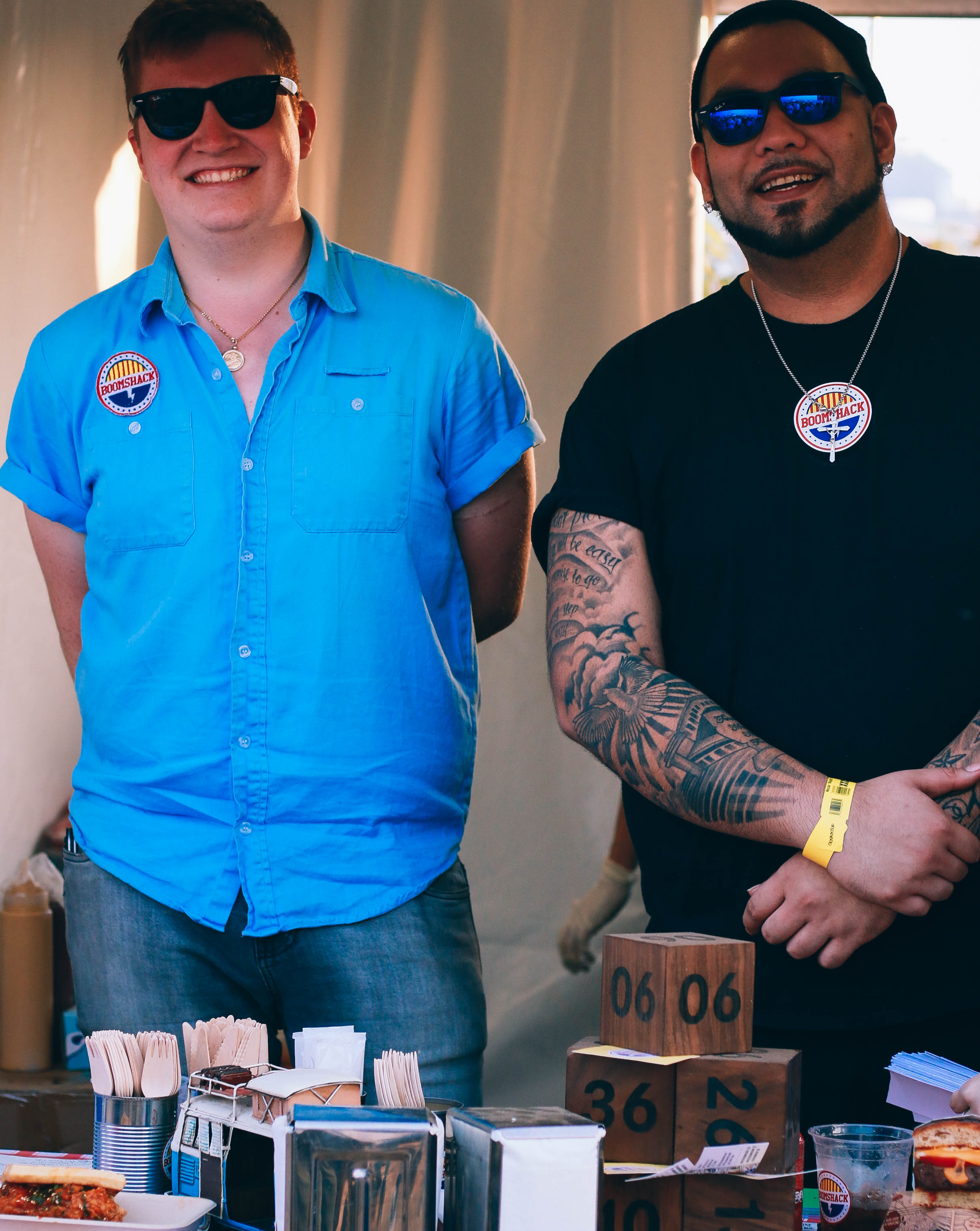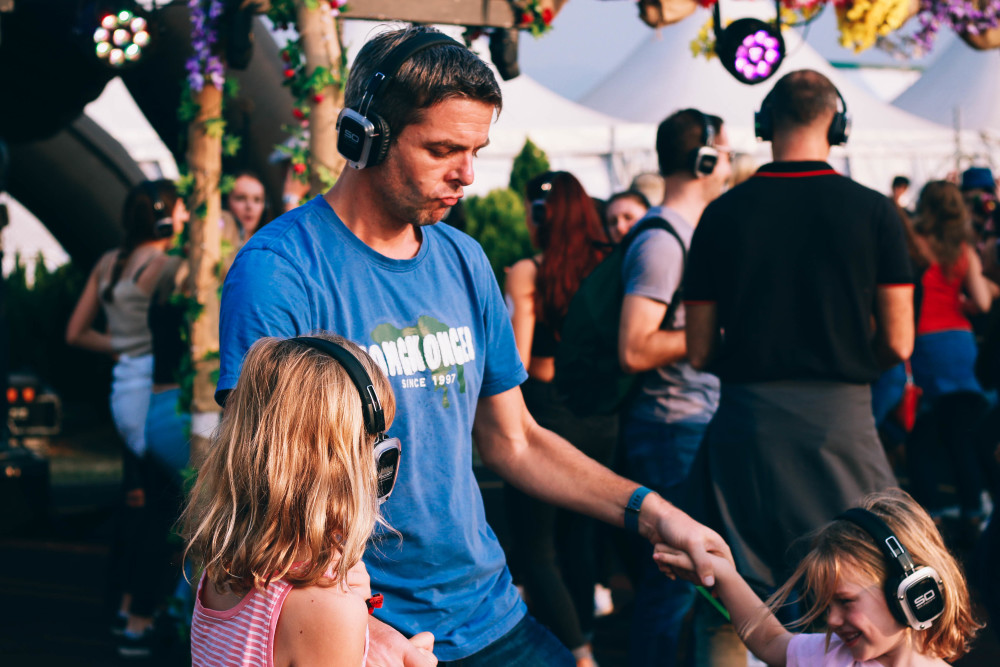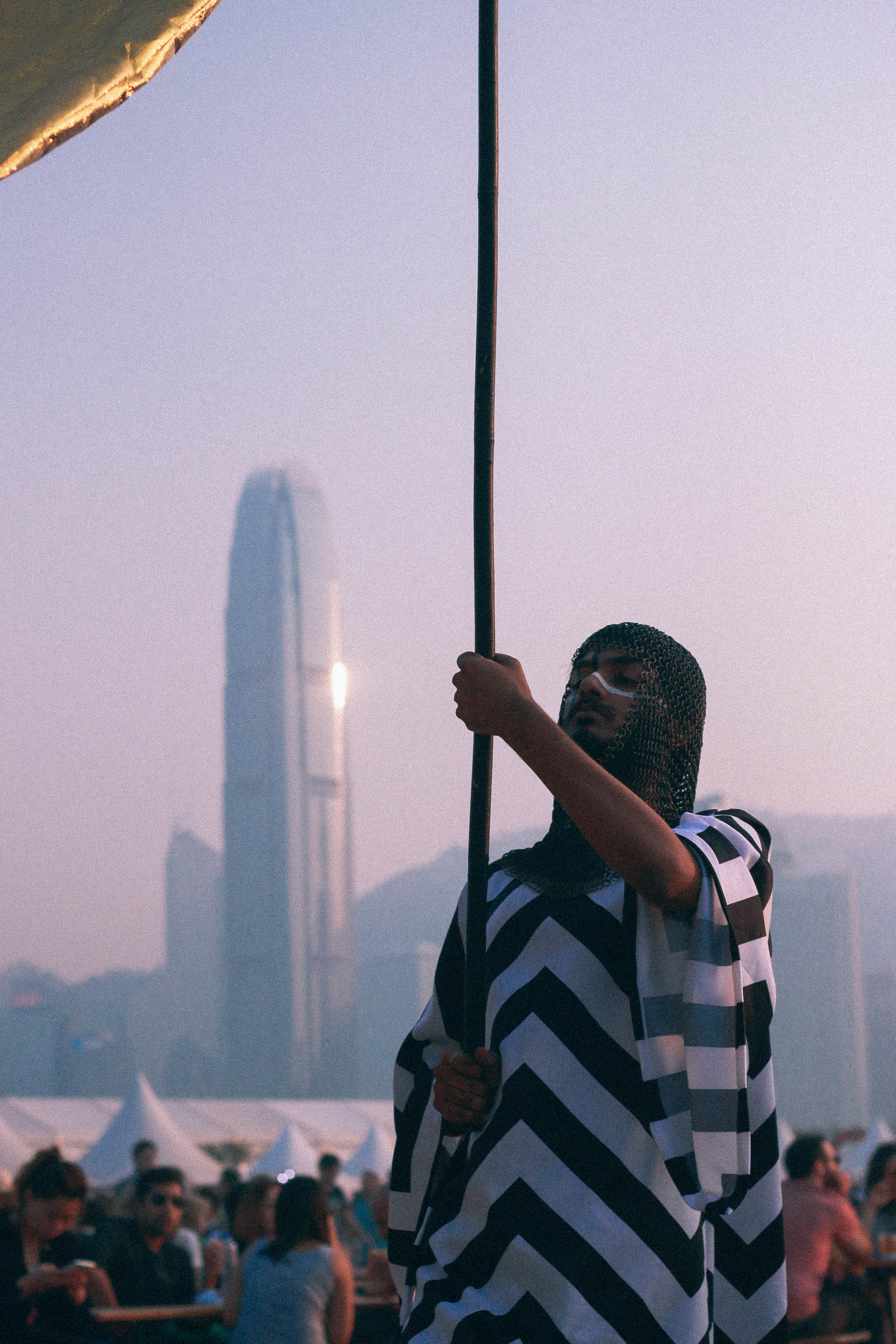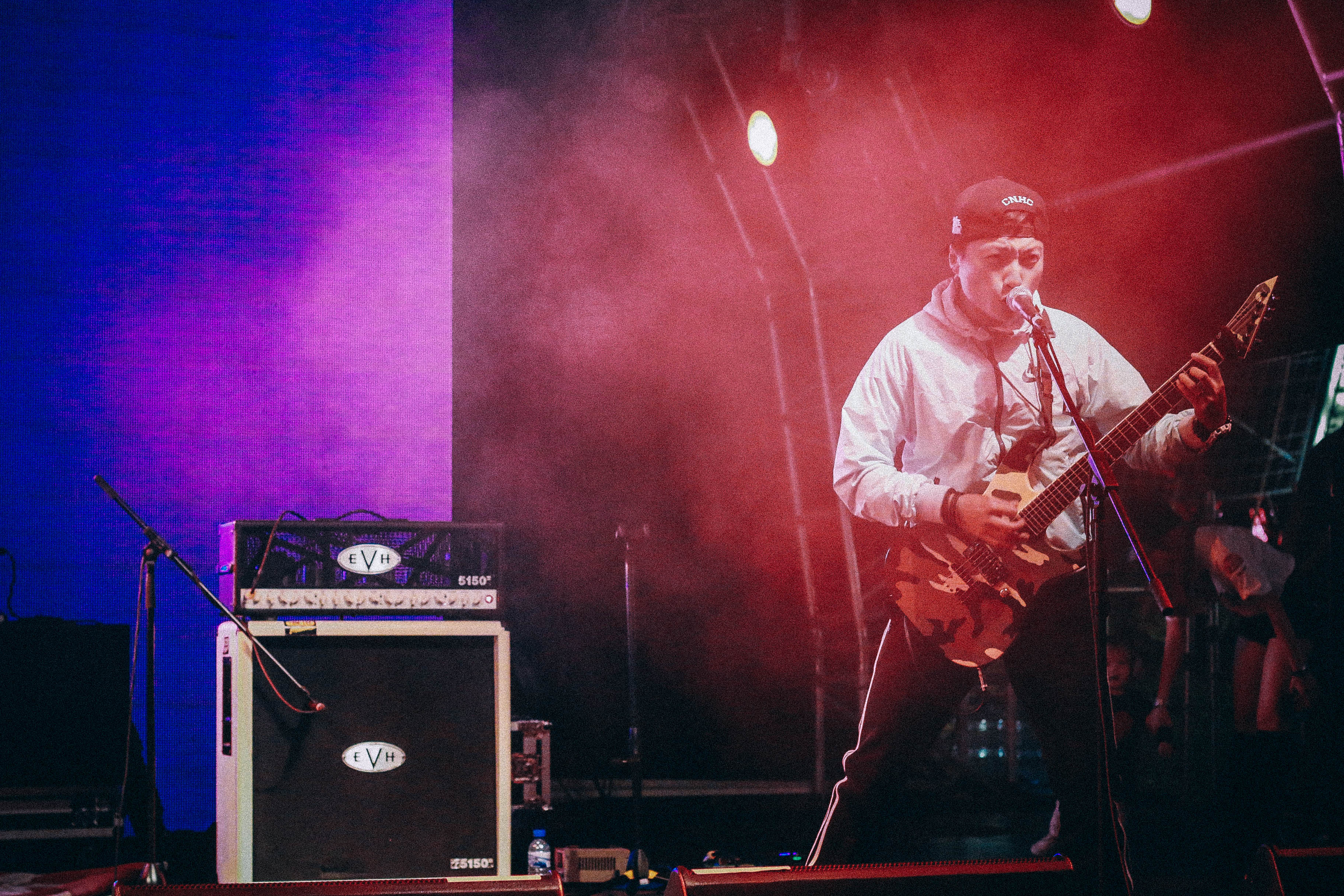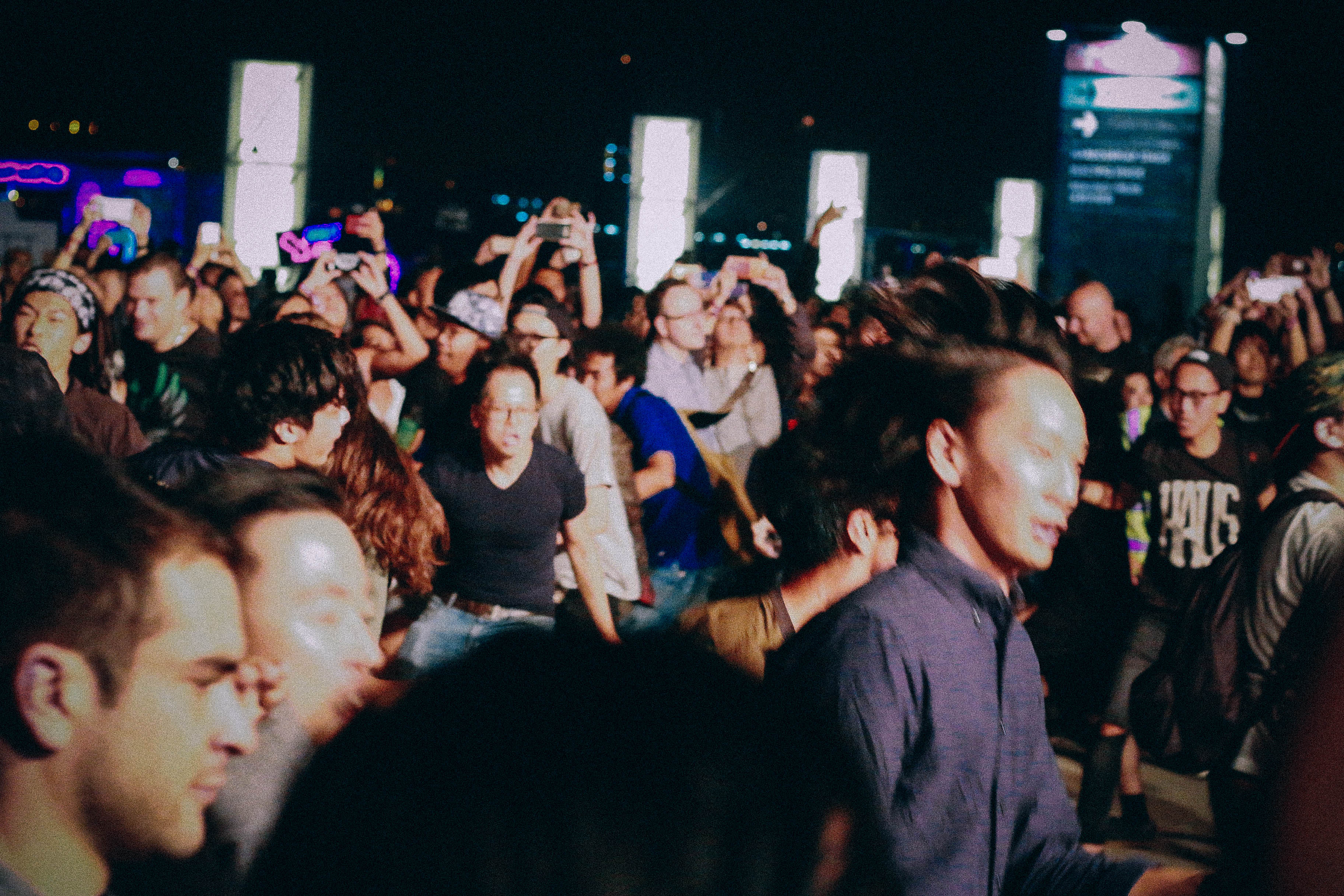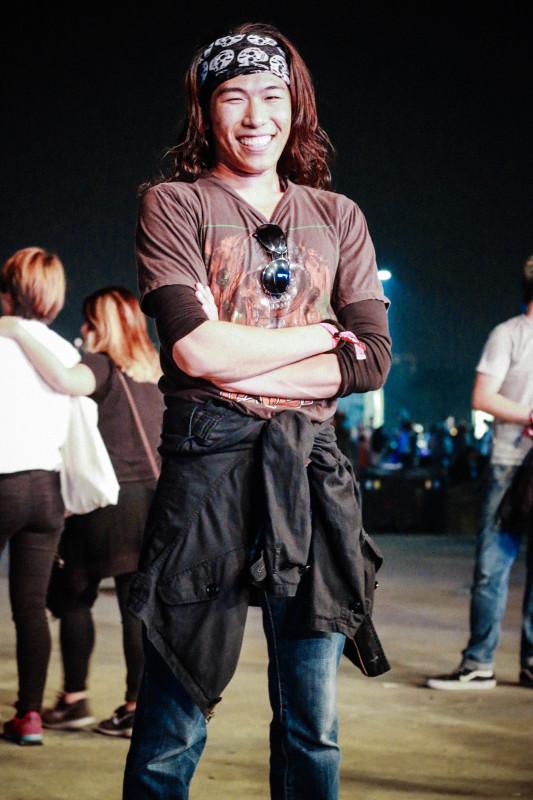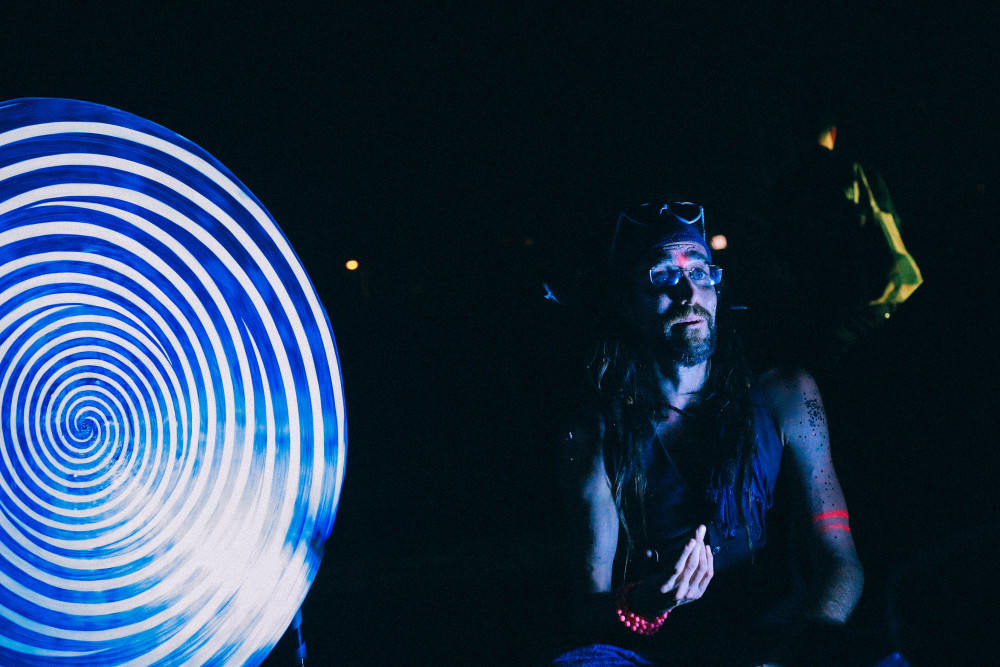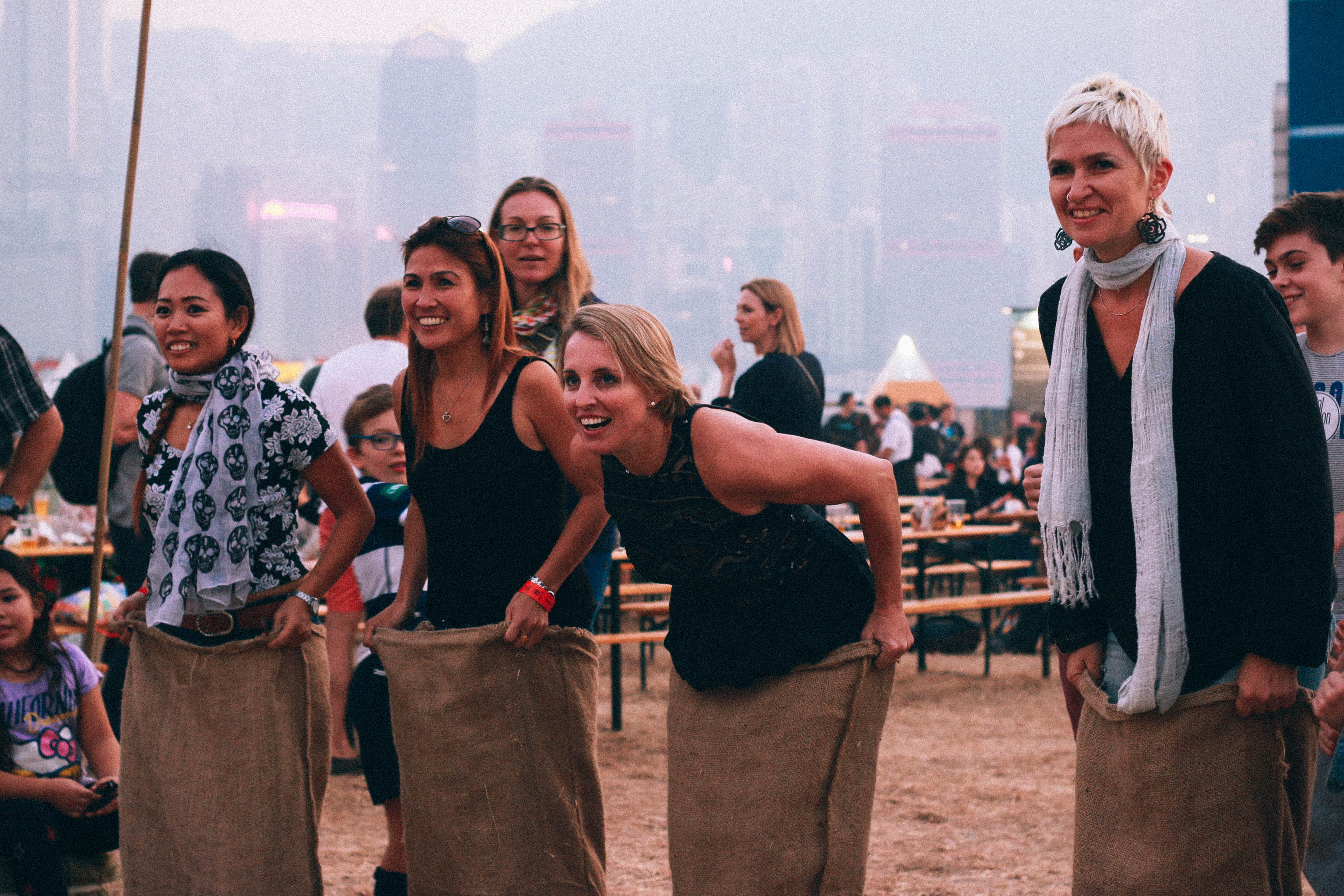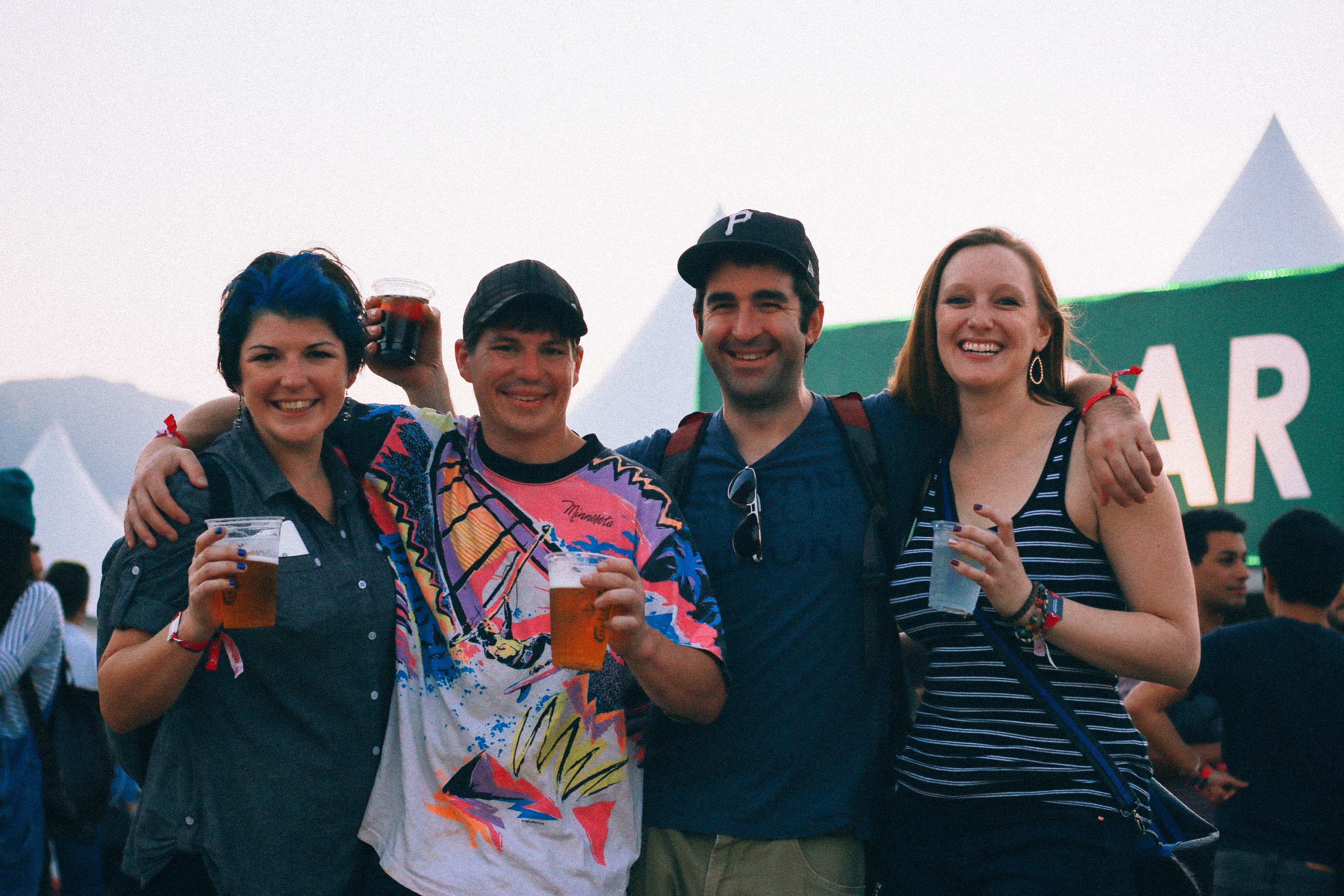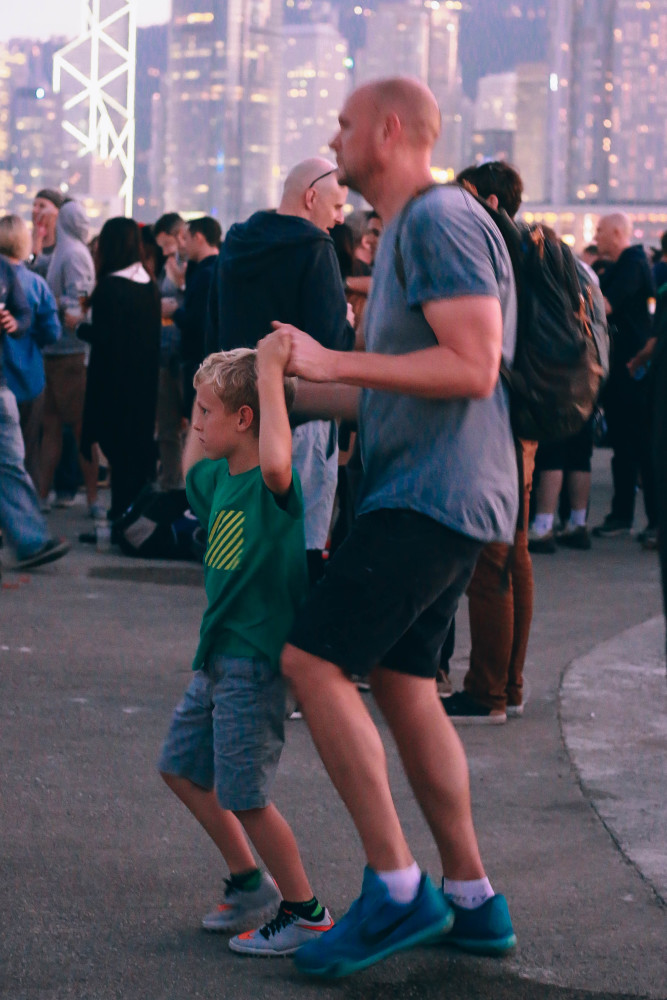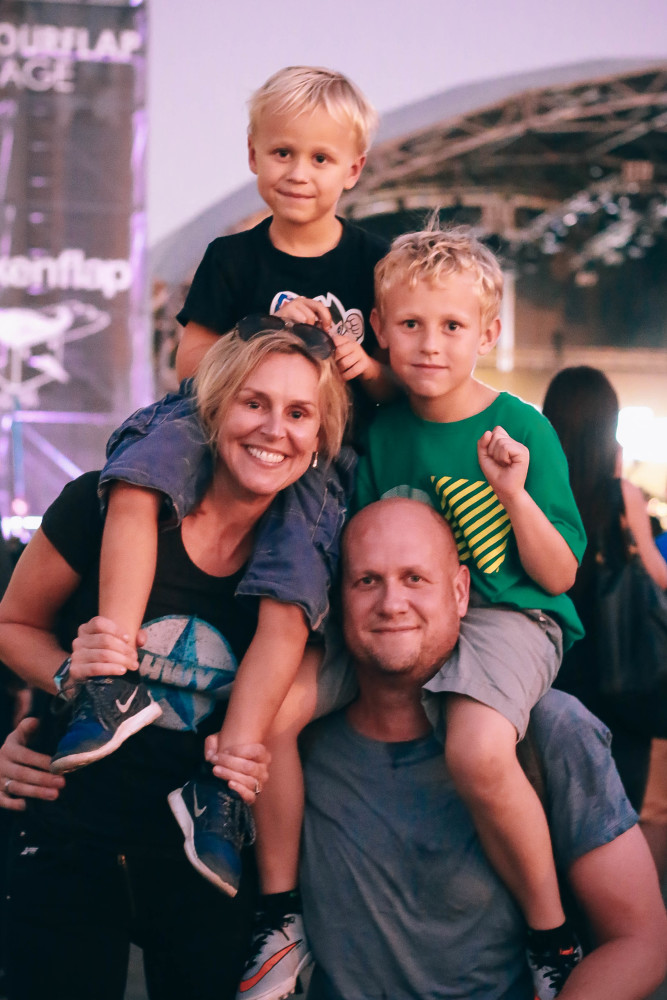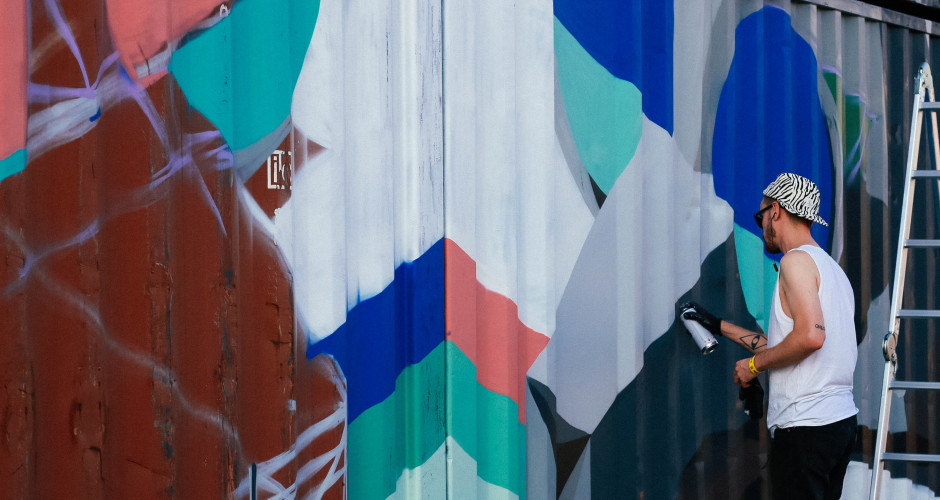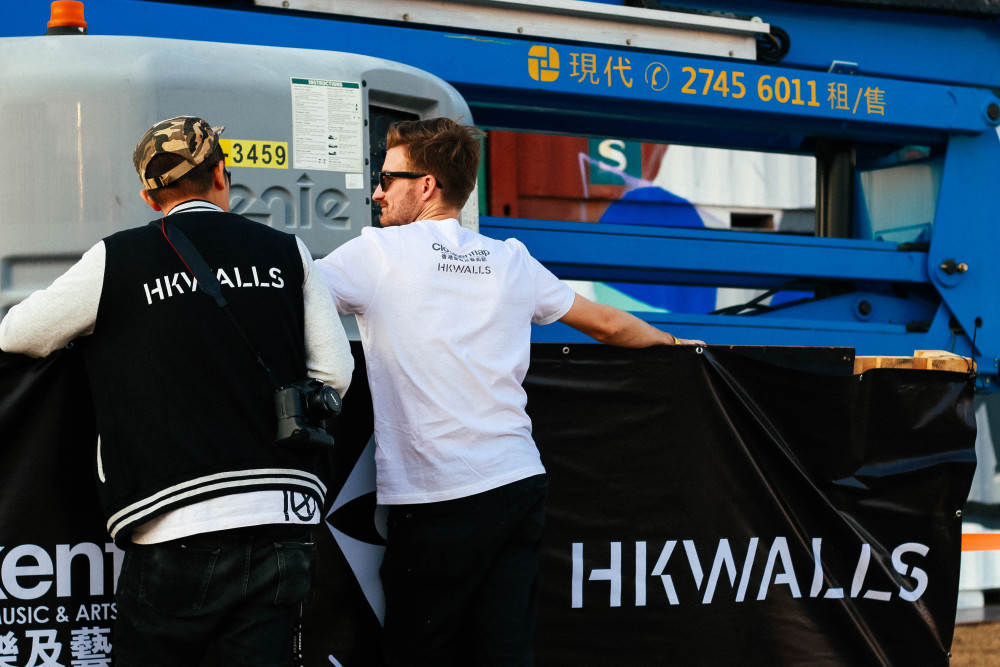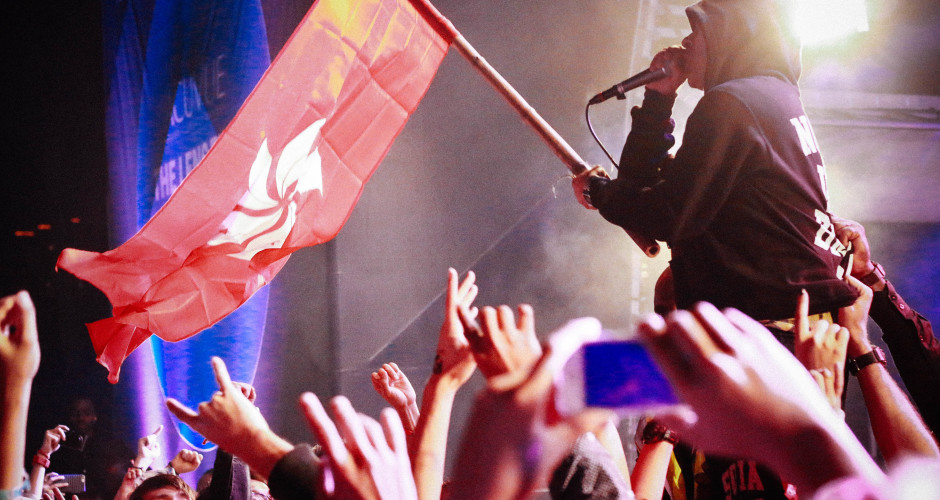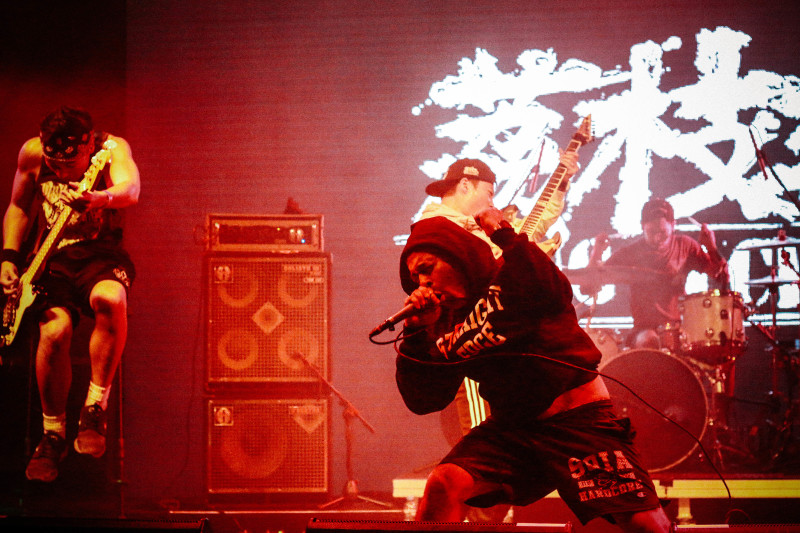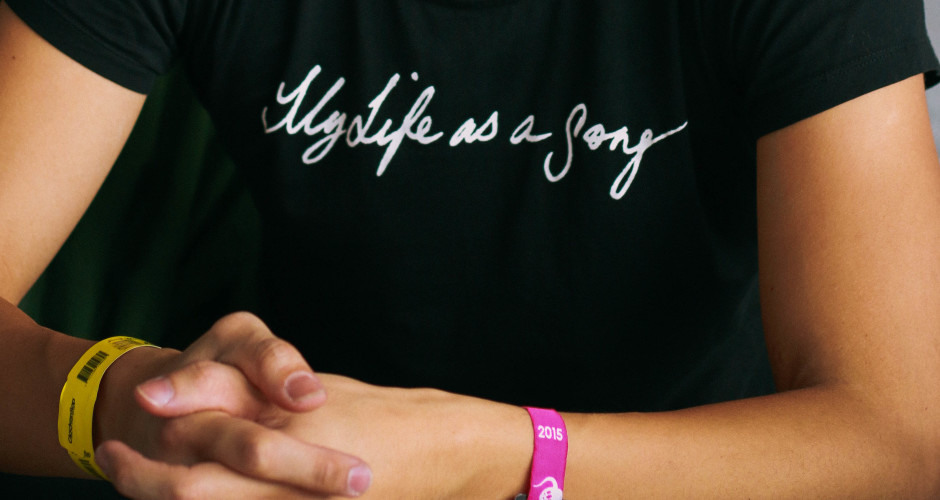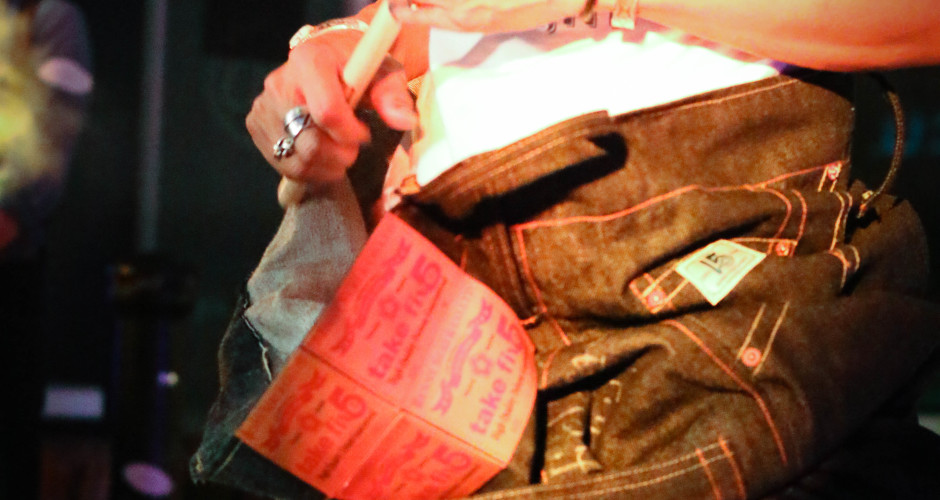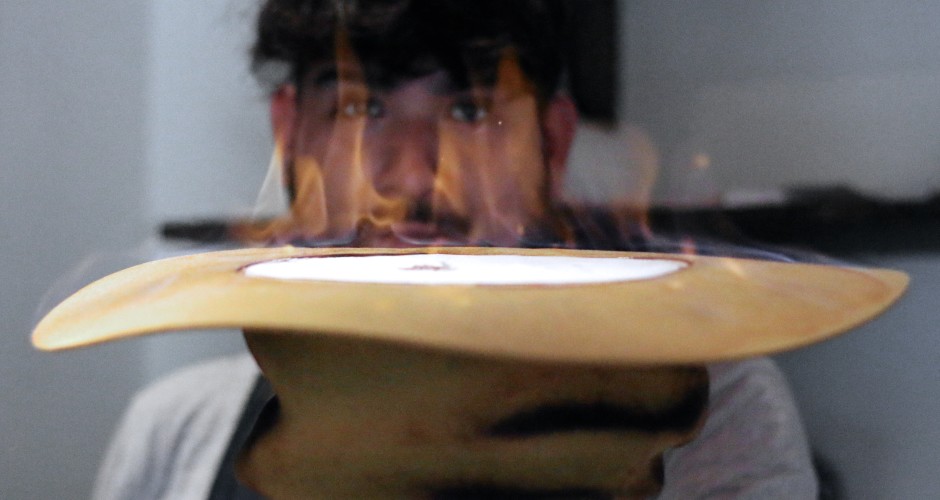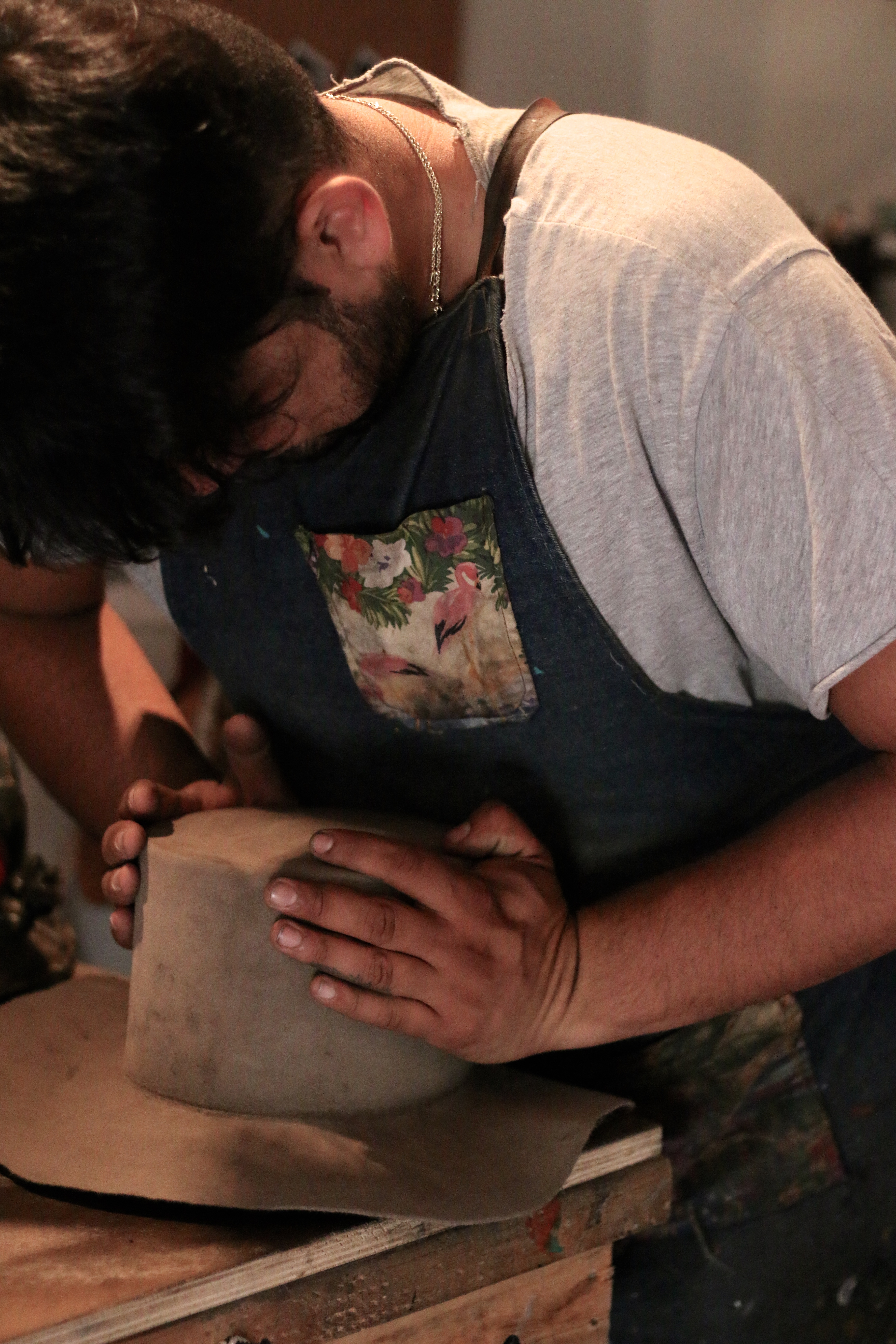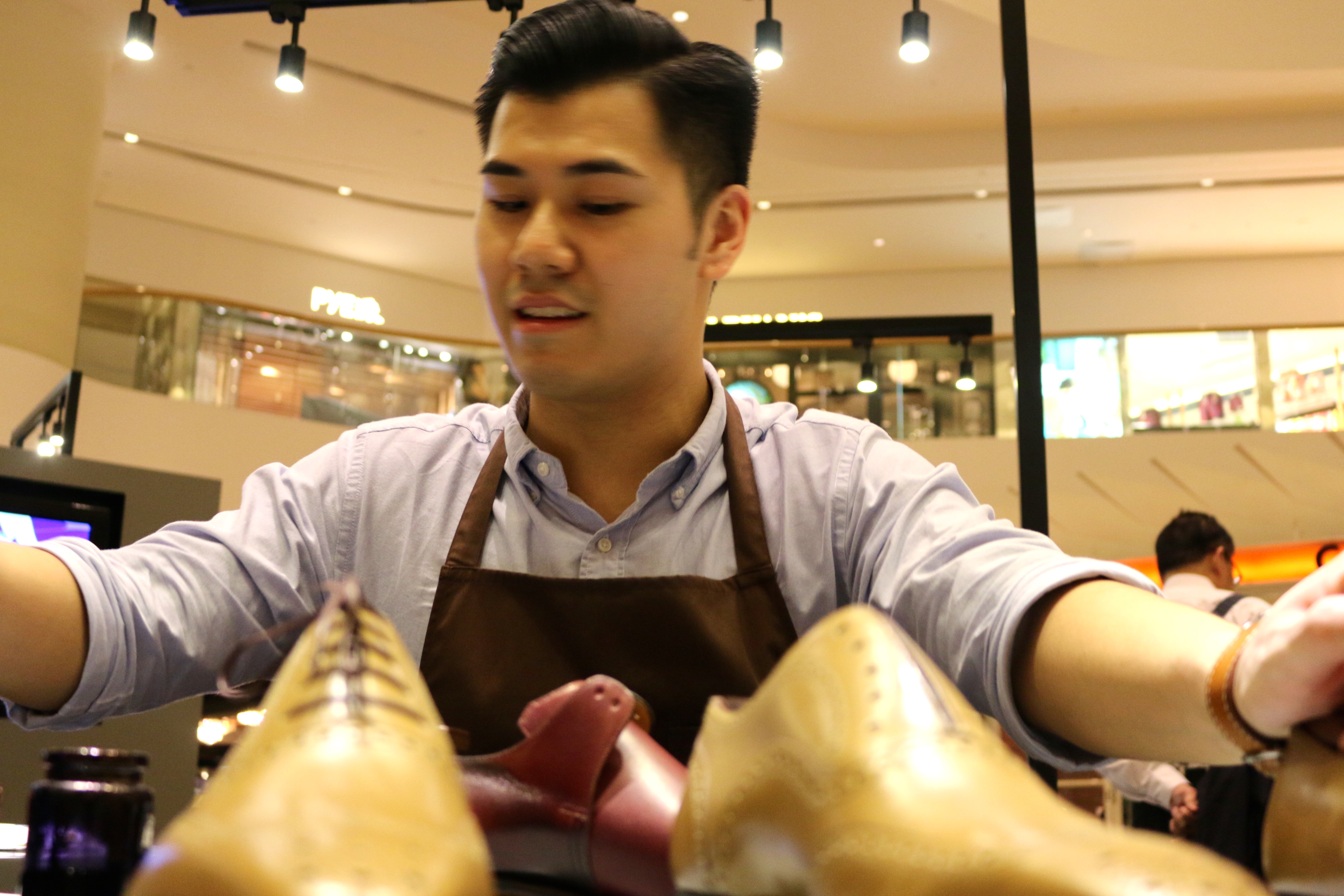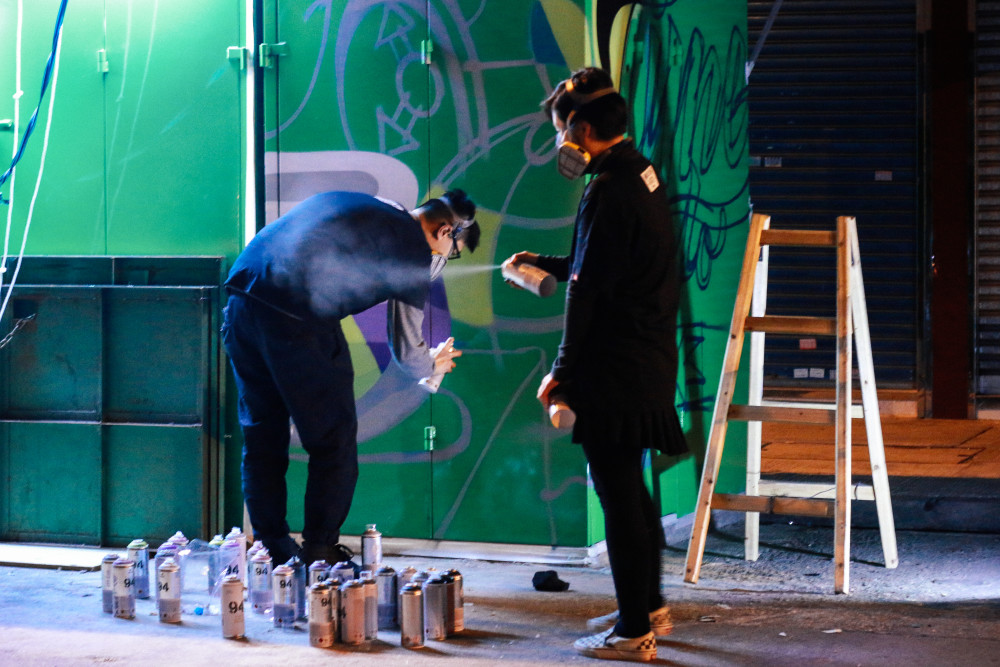
When you arrive at Sham Shui Po at 9pm, you catch a neighborhood in transition. The rattle of the night market clinks at the close of tarped storefronts. Overtime workers inhale kitchen steam and BBQ pork in corner dumpling houses. Engines run cold until sunrise.
On Ki Lung St., a lone urban runner takes advantage of unobstructed roadway. He may have settled on his evening pace, but it slows to a half-jog, eyes craning to a closed shopping kiosk washed in white light. At either side of this immaculately green box, a young man and woman hiss an outline of a graffiti piece that would be complete in three hours.
For as long as the owner of this kiosk is satisfied with the artwork, Amson and Ysoo of local collective Parents Parents have added another exhibition to Hong Kong’s expanding street art gallery.
As for the jogger, or passing driver, or other curious local stopping by: what do they think?
“There’s always someone who asks us what we’re doing,” recalls Amson. “In such a public space as this, some people will come down the stairs and say ‘I don’t like this art, why do you destroy the walls?”
For Amson and Ysoo, nights like this, spaces like this, and moments like these aren’t confrontations, but opportunities to give locals an understanding that street art isn’t destruction, but expression. Tonight is a preview for Parents Parents’ offerings at this year’s installment of HKwalls, a weeklong urban campaign to spread the local art scene one district at a time.
Chris Tuazon: What do you prefer: illegal work, or commissioned pieces like this?
Amson: Although this isn’t really like the original graffiti style — bombing and letters — I enjoy these projects. We’re allowed a safe pace, so we have the time for preparation, sketching, and coloring. That way, we can make it correctly.
CT: How did you get into street art?
A: When I was in grade school, I was really into this band called LMF. I really liked the style of their album cover, and I figured I could try to create something like it. LMF was the first hip-hop band in Hong Kong, and it introduced me to hip-hop culture, and at that moment I chose that graffiti would be a part of . . . I don’t know whether to call it a career or hobby.
CT: What is Parent’s Parents’ particular style?
A: Since there’s four of us in this group, we work together using the best of our different styles. For example, I like to draw my cartoon characters. Ysoo likes more realistic drawings, and freehand writing. So we combine these together to make something interesting.
CT: In this piece, “Time to Wake,” what are you trying to convey?
A: Since graffiti has a language, those who don’t know it can have trouble understanding and accepting what they see. So in this piece, the ticking clock, the morning apple, the strong contrast, and the title is all about what everyone’s typical day is like here.
CT: If someone saw you doing this and said “Hey, how can I do this?” What would you do?
A: I would let him know what the real culture is, and if he really wants to try it, I’d let him grab a can and go for it.
CT: So in other words, support the art.
A: HKwalls is really supportive of our local artists, and will bring guys from Europe to share their style and communicate with us. We’ve met crews from Germany, and we’ve learned from them, and not just their art.
These guys are street artists full-time. People in HK, like my family will say “If you do street art, you can’t get money. You can’t get a house. You can’t get anywhere.” But these guys prove if you really want to do what you want, one day you can succeed, and show your passion worldwide. For me, now I think about not just doing art within the HK scene, but out there.
CT: In the meantime, it seems that you feel pretty optimistic about the scene here.
A: It’s going up, because in the global culture more people are focused on the street art scene. Galleries out in LA and New York showcase it more than ever before. Maybe that will make the HK people welcome us and give the public more opportunity to really see the scene for what it is. Maybe there’s kids here who only illustrate on paper, and don’t realize what they’re doing. But at that moment they’re making street art. They’re creating real art.
“Time to Wake” can be found completed here. This year, HKwalls has chose Sham Shui Po as the local area to bring street art from HK-based and international artists, who will use new & old spaces as public canvas. Parents Parents are one of many to showcase their talents this March-April 2016. Follow HKwalls for more information.

